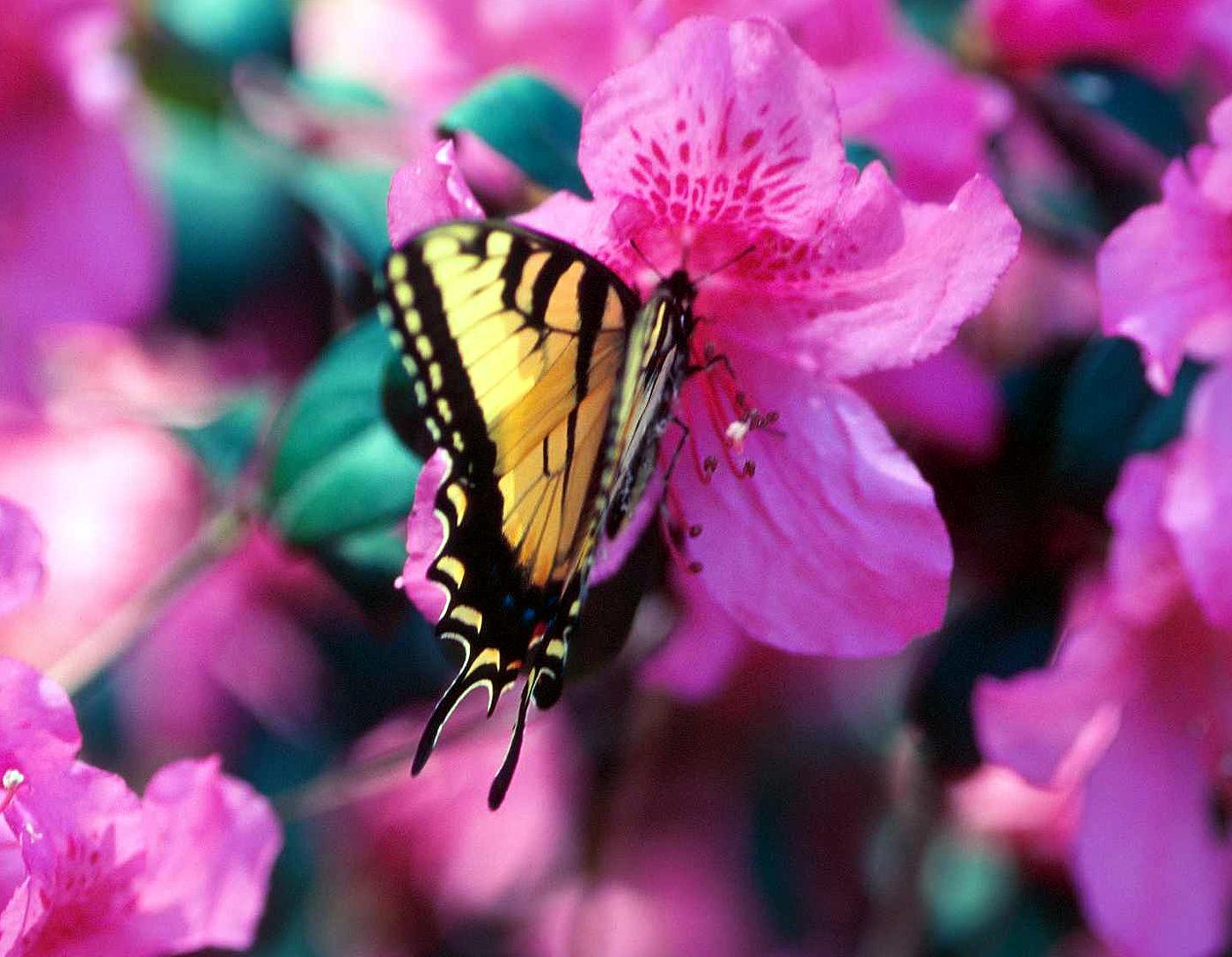Information Possibly Outdated
The information presented on this page was originally released on February 25, 2002. It may not be outdated, but please search our site for more current information. If you plan to quote or reference this information in a publication, please check with the Extension specialist or author before proceeding.
Azaleas deserve top photogenic award
By Norman Winter
MSU Horticulturist
Central Mississippi Research & Extension Center
With all the new neighborhoods springing up everywhere, I'm sure I'm not alone in the panic that we will soon miss out on the floral displays of this spring's azaleas. Some disparage the azalea, but I am not one of them; I need azaleas at my new home.
Having grown up in the alkaline soil of Texas, each spring I shout praises for the opportunity to live in Mississippi and enjoy azaleas' colorful displays. Just ask the Convention and Visitors Bureau in Natchez how important the azalea is to the spring pilgrimage.
In McComb, they light the azaleas for a special trail so you can see their beauty at night. When the Masters Tournament is held each year in Augusta, Ga., what plant is making the course look like heaven on earth? Of course, it is the azalea.
It is obvious that azaleas do well in Mississippi, maybe to the point that some gardeners get the impression you can just stick them in the ground. This is simply not the case. Azaleas must have very well-drained, organic-rich, acidic soil.
To accomplish this, it is best to plant on raised beds so that when we do get heavy rains, the water drains freely. This is such a critical issue that many experts even suggest planting them high where the top one inch of the rootball is above the soil profile and loose organic material is added around it.
Azaleas are very shallow-rooted plants. Since you are planting high and in loose soil, azaleas are prone to drying out, especially those newly planted. Supplemental water will be needed. Mulch is essential to conserve moisture.
Established azaleas need to be fertilized in late winter and again in mid-summer. I like to use azalea/camellia fertilizers. Broadcast evenly in your azalea bed. Prune azaleas after they bloom, and only as needed. Pruning after June 30 may result in the loss of some of next year's bloom, but you can certainly do light shaping without harm.
The numerous outstanding varieties make it hard to choose the best for your landscape. It is a good idea to spread your selections around using some from several different groups. For example, the Southern Indica group is the most popular. I love them and butterflies do, too. These are large shrubs and are cold hardy to around 10 degrees on average. Popular varieties are Formosa, G.G. Gerbing, Judge Solomon, George Lindley Tabor and Pride of Mobile.
Among the most cold-hardy groups of azaleas are Kurumes and Girard Hybrids. By choosing some of these in addition to the Southern Indicas, you are covering your bets, so to speak, during the harsher-than-normal winters. Then there are groups like the Robin Hill Hybrids and Satsukis. These are known to be late bloomers. In fact Satsuki means fifth month in Japanese. If a late frost knocks out blooms of other selections, these most likely will still have a bloom in April to early May. Even if a late frost doesn't occur, you have spread your azalea bloom over a longer period.
There are many varieties in these groups, and believe it or not, there are many more good groups. One other group that I want to mention is the Encore series. Like an encore at a concert, these azaleas bloom again. It is not uncommon to see a bloom at any month during the summer. These azaleas all have the first name Autumn, such as Autumn Royalty. As with other azaleas, the spring bloom is the most dramatic, but they do have a very good fall bloom as well.
The Encores do not get as large as the Southern Indicas, topping out around 36 to 42 inches. The foliage is attractive, serving as the perfect backdrop for the brightly colored flowers. Like the Encore azaleas, the Louisiana Select winner, Watchet, also repeats in the fall.
No shrub can give a Kodak moment like the azalea, and now is the time to prepare the beds and get several planted. But by spreading our selections among several groups, we can have a layered look in the garden, ensure our spring bloom and extend our season into the fall.



